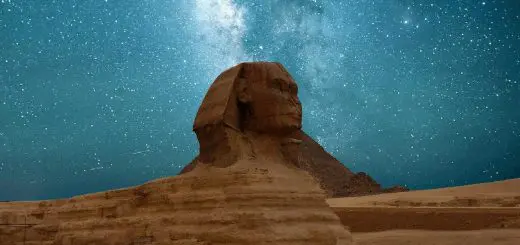Where Is Spain Located on the Map?

Looking for more amazing products? Check out our online store and explore our collection here! Happy shopping!
Before diving in, please note: This post is for informational purposes only. If you’d like to know more about how we approach topics, feel free to check out our friendly Disclaimer Page.
Hey there, amazing readers! 
We’re committed to delivering quality posts, and your support (even just sticking around despite the ads) means everything to us. So, bear with us, and thanks for helping us keep the good vibes rolling. Now, on to the fun stuff!
TRANSLATE BUTTON AT THE END OF THE ARTICLE
A Quick Overview
Spain, a vibrant country known for its rich culture, stunning landscapes, and delicious cuisine, is a remarkable destination in Southern Europe.
Nestled between the Mediterranean Sea and the Atlantic Ocean, Spain is not just a geographical location; it’s a treasure trove of history, art, and diversity.
If you’ve ever wondered where exactly Spain is located on the map, you’re in for a delightful journey through its geography, culture, and significance.
Discovering Spain: A Jewel of Southern Europe
Spain sits like a jewel on the Iberian Peninsula.
It’s flanked by diverse landscapes, from the majestic Pyrenees mountains in the north to the sun-soaked beaches of the Costa del Sol in the south.
With Portugal to its west and France to the northeast, Spain offers a unique blend of cultures and influences.
In a nutshell, Spain is an enchanting blend of old and new.
Each corner of the country tells a story, whether it’s through vibrant festivals like La Tomatina or historic landmarks like the Alhambra.
The lively spirit of Spanish life is infectious, with flamenco dancing, tapas bars, and siestas deeply woven into everyday life.
In terms of size, Spain is the fourth-largest country in Europe.
It is about 505,992 square kilometers (195,364 square miles), making it comparable to countries like Sweden or Texas in the U.S.
This size contributes to its incredible diversity; you can experience mountains, plains, and beaches all within a few hours of driving.
Spain’s Geographical Coordinates: A Quick Overview
To pinpoint Spain on the map, we look at its coordinates.
It sits approximately between 36° to 43° North latitude and 9° to 4° West longitude.
This means that if you draw a line on the globe, you’ll find Spain tucked comfortably in the southwestern corner of Europe.
These coordinates give us insight into Spain’s climate and ecosystem.
The southern parts enjoy a Mediterranean climate, characterized by hot, dry summers and mild, rainy winters.
The northern regions, however, are under the influence of the Atlantic, leading to a cooler, more humid climate.
Ever wondered what these coordinates look like in real life?
Imagine standing in the vibrant streets of Seville, feeling the warmth of the sun on your skin while taking in the colorful tiles and historic architecture.
Or think of the lush green hills of Galicia, where the weather is often cloudy but bursting with life.
The Borders of Spain: Who Are Its Neighbors?
Spain shares its borders with several countries, and each neighbor adds to its cultural tapestry.
To the northwest lies Portugal, a country with which Spain shares a deep historical connection.
The friendship between these two nations is evident through shared festivals, culinary traditions, and even language.
To the north, Spain meets France, with the majestic Pyrenees mountains serving as a natural barrier.
This border has facilitated cultural exchanges for centuries, contributing to the unique blend of traditions found in regions like Catalonia.
In terms of maritime borders, Spain has coastlines along the Atlantic Ocean and the Mediterranean Sea.
Its proximity to North Africa is also worth mentioning; only a short distance separates the Spanish coast from Morocco.
This location has led to an interesting mix of cultures, evident in the cuisine, art, and music of southern Spain.
Exploring Spain’s Regions: Diversity in One Country
Spain is divided into autonomous communities, each with its own unique identity and charm.
Here are some highlights:
Andalusia: Known for flamenco and Moorish architecture, it’s a cultural hub in the south.
Catalonia: The home of Barcelona, this region is famed for its art and modernist architecture, especially the works of Antoni Gaudí.
Madrid: The central region is not just the capital; it’s also a melting pot of cultures and a culinary hotspot.
Basque Country: Known for its distinct language and delicious pintxos, it stands out for its rich traditions and stunning coastlines.
Exploring these regions is a journey through time.
Each area boasts its own festivals, dialects, and culinary specialties.
For instance, while paella hails from Valencia, tapas can be found across the nation, each region adding its unique twist.
Major Cities of Spain: From Madrid to Barcelona
When we talk about Spain, major cities often come to mind.
Madrid: The capital city is a vibrant place filled with museums, parks, and an exciting nightlife.
Don’t forget the famous Prado Museum and the stunning Retiro Park!
Barcelona: A city that feels alive with creativity, thanks to its stunning architecture, such as the Sagrada Familia, and beautiful beaches.
Seville: A treasure trove of history, famous for its annual Feria de Abril and the breathtaking Alcázar palace.
Valencia: Known for its futuristic City of Arts and Sciences and delectable cuisine, particularly paella.
Bilbao: The heart of the Basque Country, where modern architecture meets rich culinary traditions.
Each city offers its own rhythm and charm.
Imagine strolling through the streets of Madrid, enjoying a café con leche, or dancing the night away in a Barcelona club.
Spain’s Coastlines: Mediterranean and Atlantic Beauty
Spain’s coastlines are nothing short of spectacular.
With over 4,000 miles of coastline, there’s a beach for every type of traveler.
Mediterranean Coast: Known for its crystal-clear waters and warm climate, this coast attracts sun-seekers from all over the world.
The Costa Brava and Costa del Sol are particularly famous for their stunning beaches and vibrant nightlife.
Atlantic Coast: This side is wild and rugged, with dramatic cliffs and cooler waters.
The beaches in Galicia and Asturias are perfect for those who enjoy a more tranquil, less commercialized experience.
Each coastline offers a different experience.
Whether you prefer the lively beaches of the Mediterranean or the serene shores of the Atlantic, Spain has it all.
Imagine the joy of sipping a cocktail while watching the sunset over the Mediterranean, or enjoying a long walk on a secluded beach in the north.
The Islands of Spain: A Paradise on the Map
Spain’s islands are like little paradises scattered across the ocean.
The two main archipelagos are the Balearic Islands in the Mediterranean and the Canary Islands off the northwest coast of Africa.
Balearic Islands: Includes famous spots like Mallorca, known for its stunning beaches and vibrant nightlife, and Ibiza, the party capital of the world.
But there’s more – Menorca offers tranquility and natural beauty, while Formentera is perfect for beach lovers.
Canary Islands: These islands boast a subtropical climate and offer diverse landscapes, from volcanic terrain in Lanzarote to lush forests in La Gomera.
They are a haven for outdoor enthusiasts.
Whether you’re hiking in the volcanic landscapes of the Canaries or lounging on the pristine beaches of the Balearics, Spain’s islands provide a perfect escape.
Cultural Significance of Spain’s Location in Europe
Spain’s geographic location has played a crucial role in shaping its culture.
The country has been a crossroads of various civilizations, including the Romans, Moors, and Christians.
This rich tapestry of influences has resulted in a unique cultural identity.
Spain’s location also makes it a bridge between Europe and Africa.
This has led to a fascinating blend of traditions and customs.
The rhythm of life in Andalusia, for instance, is heavily influenced by its Moorish past, evident in the architecture and music.
Furthermore, Spain’s accessibility has made it a popular destination for travelers.
Its vibrant cities and diverse regions attract millions of tourists each year.
This influx of visitors contributes to a dynamic cultural landscape, constantly evolving yet rooted in tradition.
Climate and Geography: Spain’s Unique Landscape
Spain’s geography is as diverse as its culture.
The country features:
Mountains: The Pyrenees in the north and the Sierra Nevada in the south provide not only stunning vistas but also opportunities for skiing and hiking.
Plains and Plateaus: The central Meseta, a high plateau, is vital for agriculture and offers a stark contrast to the mountainous regions.
Coastlines: The extensive coastlines provide beautiful beaches and a variety of marine ecosystems.
The climate varies greatly depending on the region.
The Mediterranean coast enjoys warm summers and mild winters, while the north experiences cooler temperatures and more rainfall.
Spain’s varied landscapes invite exploration.
Whether you’re hiking in the mountains or lounging on a beach, each region offers its own unique charm.
Spain on the World Map: Key Global Positioning
Spain holds a prime spot on the world map.
Situated at the southwestern edge of Europe, it serves as a gateway between Europe and Africa.
This strategic position has made Spain an important cultural and economic player on the global stage.
From a global perspective, Spain is a member of the European Union, the United Nations, and NATO, among other international organizations.
Its economic influence extends beyond tourism to include sectors like agriculture, manufacturing, and renewable energy.
Spain’s role in world affairs is significant.
Its historical connections with Latin America also facilitate trade and cultural exchanges, making it a vital link between Europe and the Spanish-speaking world.
Traveling to Spain: Getting There from Anywhere
If you’re planning a trip, getting to Spain is easier than you might think.
Major airports, including Madrid-Barajas and Barcelona-El Prat, serve numerous international flights.
Once you arrive, public transportation is efficient.
Spain boasts a network of trains, buses, and metros that connect cities and regions seamlessly.
Traveling within Spain can be an adventure in itself.
Picture hopping on a high-speed train from Madrid to Seville, taking in picturesque landscapes along the way.
Or perhaps you’d prefer a leisurely drive along the coast, stopping at hidden beaches and charming towns.
No matter how you travel, Spain welcomes you with open arms.
The warmth of the locals, the delicious food, and the vibrant culture will make your journey unforgettable.
Fun Facts About Spain’s Location You Didn’t Know!
Spain has the second-largest number of UNESCO World Heritage Sites in the world, showcasing its rich history and culture.
The country is home to the world’s oldest restaurant, Sobrino de Botín, established in 1725 in Madrid.
Spain’s geography includes the highest peak in Western Europe, Mount Teide in the Canary Islands, which stands at 3,718 meters (12,198 feet).
The Iberian Peninsula is shared between Spain and Portugal, making it one of the most famous landmasses in Europe.
Spain plays host to the famous Running of the Bulls in Pamplona, an event that attracts thousands of tourists each year.
Exploring Spain is about discovering its many facets.
Each fact, each detail adds to the vibrant picture of this fascinating country.
Conclusion
Spain is more than just a location on the map; it’s a vibrant land pulsating with history, culture, and natural beauty.
From the stunning coastlines to the majestic mountains, each region offers a unique experience waiting to be explored.
Whether you’re strolling through the streets of Barcelona or enjoying the tranquility of the Balearic Islands, Spain is a place where memories are made.
So, if you ever find yourself wondering where Spain is located on the map, just remember it’s a treasure waiting for you to discover!

The Enlightenment Journey is a remarkable collection of writings authored by a distinguished group of experts in the fields of spirituality, new age, and esoteric knowledge.
This anthology features a diverse assembly of well-experienced authors who bring their profound insights and credible perspectives to the forefront.
Each contributor possesses a wealth of knowledge and wisdom, making them authorities in their respective domains.
Together, they offer readers a transformative journey into the realms of spiritual growth, self-discovery, and esoteric enlightenment.
The Enlightenment Journey is a testament to the collective expertise of these luminaries, providing readers with a rich tapestry of ideas and information to illuminate their spiritual path.
Our Diverse Expertise
While our primary focus is on spirituality and esotericism, we are equally passionate about exploring a wide range of other topics and niches 

To ensure we provide the most accurate and valuable insights, we collaborate with trusted experts in their respective domains 
Our blog originally focused on spirituality and metaphysics, but we’ve since expanded to cover a wide range of niches. Don’t worry—we continue to publish a lot of articles on spirituality! Frequently visit our blog to explore our diverse content and stay tuned for more insightful reads.
Hey there, amazing reader! 
Check out our store here and take a peek at some of our featured products below! Thanks for being awesome!










